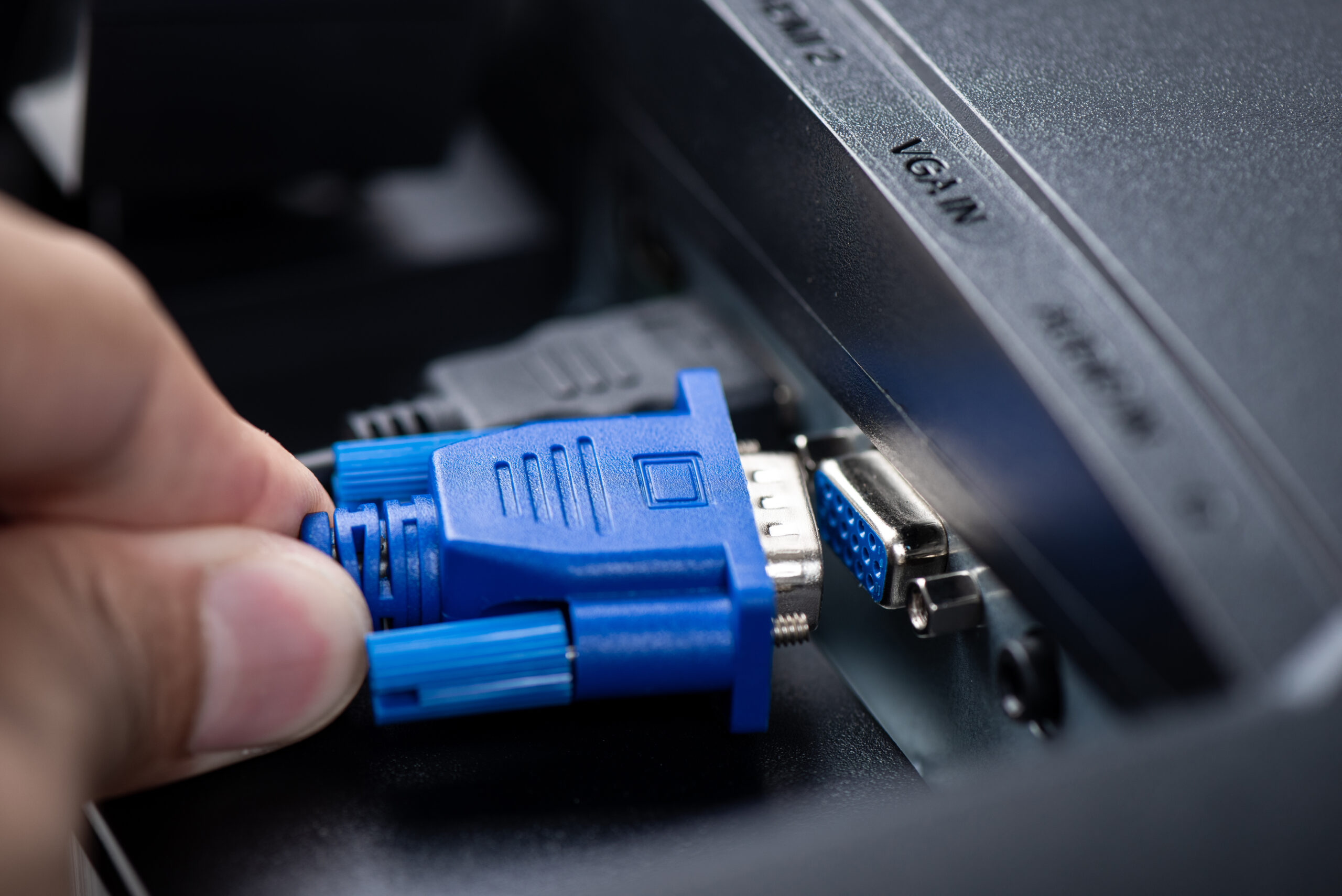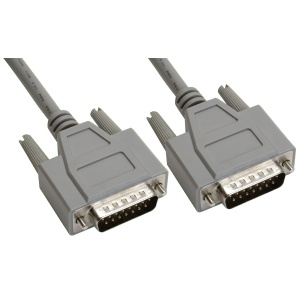Step into the fascinating world of VGA cables, their various intricacies, and how they influence your everyday tech experiences.
What is a VGA Cable?
Before we plunge into the nitty-gritty of the subject, let’s start with the basics. A VGA Cable, or Video Graphics Array Cable, is a type of cable used to transmit video data from a device to a display. This could be from a computer to a monitor, a laptop to a projector, or similar setups. It’s a kind of “messenger,” if you will, carrying video data from one point to another.

History of VGA Cables
Stepping back in time, VGA cables were introduced in 1987 by IBM as a part of their PS/2 line of computers. It was initially designed to support a display resolution of 640×480 pixels—quite a feat for its time, wouldn’t you agree? But the journey didn’t stop there. VGA cables and interfaces have evolved since then, embracing more capabilities and improving over time.
The Anatomy of a VGA Cable
Did you ever wonder about the construction of a VGA cable, the wires and pins that make the magic happen? Well, a standard VGA cable usually comprises 15 pins arranged in three rows. Each pin plays a distinct role in transmitting color and synchronization signals to the display device.
How VGA Cables Work
Now let’s get our hands dirty with a bit of science. A VGA cable works by transmitting analog signals. It sends red, green, and blue (RGB) color signals and synchronization signals separately, ensuring that the display accurately portrays the sent data. Sound complicated? Think of it as a team, where each player has a specific role to ensure the victory—accurate and high-quality video transmission.
Types of VGA Cables
VGA cables come in various shapes and sizes, each designed for a specific purpose. For instance, standard VGA cables, slim VGA cables, and flex series VGA cables are a few types, each offering unique advantages in terms of flexibility, transmission quality, and so on.
VGA Cable vs. HDMI and DVI
How does a VGA cable fare when pitted against other video transmission standards like HDMI and DVI? Well, while VGA transmits analog signals, HDMI and DVI primarily handle digital signals. Each has its pros and cons, which we’ll dissect further in this section.
Understanding VGA Connectors
Just like you need the right key to open a lock, you need the right connector for a VGA cable to function. VGA connectors are typically D-shaped and carry 15 pins for transmission. Depending on the application, they can be male or female types. Intrigued? Wait until we get into the details!
The Importance of VGA Cables in Video Transmission
VGA cables are not just a piece of hardware; they are the backbone of video data transmission in many setups. From your office presentations to the gaming marathon at home, VGA cables have a significant role to play. Why so? Let’s find out.
Understanding VGA Cables and Their Applications in Different Industries
VGA cables are ubiquitous, finding applications in various industries such as education, corporate, entertainment, and more. Whether it’s powering a high-definition movie in a theatre or enabling a crisp presentation in a boardroom, VGA cables are there, working behind the scenes.
The Lifespan of VGA Cables
Ever wondered how long your VGA cable will last? This section will shed light on the lifespan of VGA cables and factors that may influence it.
Maintaining Your VGA Cables
To ensure your VGA cable serves you well for a long time, proper maintenance is key. We’ll explore some useful tips and tricks to keep your VGA cables in tip-top shape.
The Future of VGA Cables
Is the VGA cable destined to become a relic of the past, or does it still hold a place in the future of video transmission? We’ll look into where the industry is headed and how VGA fits into it.
Common Problems with VGA Cables and How to Solve Them
Despite their robustness, VGA cables can encounter issues. We’ll discuss common problems you might face with VGA cables and offer easy-to-follow solutions.
Understanding VGA Signal Quality
The quality of the VGA signal greatly impacts the final video output. We’ll delve into how VGA cables influence signal quality and ways to ensure optimal performance.
How to Choose the Right VGA Cable
With so many types and varieties of VGA cables in the market, choosing the right one might seem daunting. Fear not, for this section will guide you on how to pick the perfect VGA cable for your needs.
Understanding VGA Cables: Frequently Asked Questions
Got questions about VGA cables? We’ve got you covered. This section answers common queries related to VGA cables and their applications.
Conclusion
In the end, we’ll wrap up our journey of understanding VGA cables and their applications, summarizing the key points covered in the article.
Understanding VGA Cables: Frequently Asked Questions
What are the main applications of VGA cables? VGA cables are primarily used to transmit video data from a computing device to a display device. They find widespread use in computer monitors, projectors, televisions, and other display systems.
Why are there 15 pins in a VGA cable? Each of the 15 pins in a VGA cable has a specific function in transmitting color and synchronization signals to the display device. They work together to ensure accurate and high-quality video transmission.
Can a VGA cable transmit audio? No, VGA cables are designed only for video transmission. To transmit audio, you’d need a separate cable, such as an audio jack or HDMI cable that can carry both audio and video signals.
What’s the difference between VGA and HDMI? While VGA transmits analog signals, HDMI carries digital signals, enabling both audio and video transmission through the same cable. HDMI can also support higher resolution and better quality compared to VGA.
Are VGA cables becoming obsolete? While newer technologies like HDMI and DisplayPort are becoming more common, VGA still holds a significant place, especially in legacy systems and certain industries that prefer analog signals.
How do I choose the right VGA cable? Consider factors like your device compatibility, required length, flexibility, and quality of the cable. You should also ensure that the VGA cable supports the resolution of your display device for optimal performance.
Conclusion
Understanding VGA cables and their applications helps us appreciate the role these unassuming pieces of hardware play in our everyday tech experiences. Whether you’re a tech enthusiast, an IT professional, or just a curious learner, knowing about VGA cables can enrich your understanding of video data transmission. Keep exploring, and don’t stop learning!












